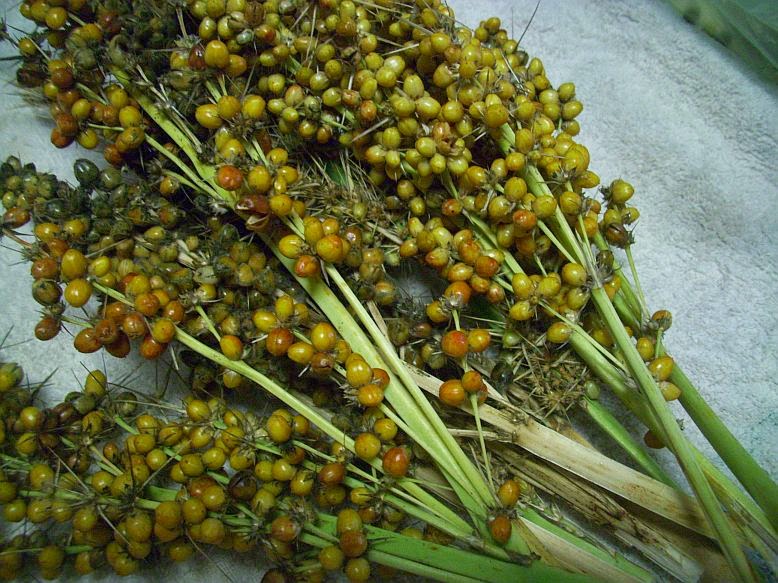Bush tucker is so interesting to me. Not only is it a
continuation of culture, it’s sustainable and often delicious. So it was that
when I heard the word “Lomandra” in three different places in the space of
twelve months, I yearned to try the taste of ten thousand years ago.
The three places I heard about Lomandra were:
1. Uncle
Terry mentioned it on a Tribal Warrior Sydney Harbour Cruise – he said the popcorn-like
seeds were made into damper (bread) by Eora people. He also said the leaf
fibres were good for dilly bags and other woven items, and that it was
important to, in thoughts or words, show gratitude for the gift of food or
materials taken from the plant.
2. National
Parks rangers mentioned that the white part of the stems and the flowers were
edible on the Hidden Treasure Walking Trail in Copeland Tops State Conservation
Area – this is Biripi land
3. Port
Stephens botanic gardens publication - interviews with Worimi women from Nelson
Bay area – one recalled her aunty making the seeds of the Lomandra into Johnny-cakes
(are these fried, like pancakes?)
Three saltwater nations, Eora, Biripi and Worimi, all using
Lomandra, apparently as a starch staple. But how, exactly?
At around the same time a good friend told me she had a heap
of it growing on her property down the south coast of NSW. She harvested a
bunch and sent it to me in March. I had some growing around my place, and I
harvested that late in January.
Here are the results of my experiments; my best guesses.
Here are the Lomadra longifolia seed
heads.
When I picked mine in January, I found there was only a
matter of days between the seed capsules still being green (they did not ripen
after picking) and the yellow-brown seed capsules already being open and the
seeds fallen out (or maybe birds had eaten the seeds?).
Once
I’d gotten the seed capsules off the spiny flower head, I left some of them in
a bowl for the seeds to fall out. There were three seeds in each capsule.
The seeds darkened as they dried out. Each one had a little brown spot on it.
Below is my first attempt to grind the seeds, still in their cases, into flour. I also had some other seed cases that were older and dried out (from last year) - those are the dark reddy-brown ones. I also tried grinding up the seeds alone - and that did not work AT ALL.
The seeds were extremely hard and no matter how I hit them
with the stone pestle, their cases stayed intact. I do not know if you can get
nutrients out by digesting them, or if they pass straight through you if you
don’t turn them into flour with a proper one of these: http://www.outbackchef.com.au/upload/article_cat_img/grindstone.jpg
Anyway, below was the seeds-in-cases ground as finely as I could manage. Anti-clockwise from the bottom: Last year's seeds, this year's seeds, this year's seeds mixed 50-50 with wheat flour.
Mixed with water, each one formed a smallish loaf:
When baked in a moderate oven, neither last year's nor this year's seeds held together. Last year's seeds were dry and inedible when they came out of the oven. This year's, alone, were fibrous but edible...and the 50-50 mix was pretty darn tasty.
Could have been even better with some native bee honey.
When my friend sent me the next batch in March, I decided to
try boiling the seeds in their capsules. Maybe, like rice grains, the seeds
could be softened that way.
The full seed cases sank to the bottom so it was easy to strain out the spikes and cases with no seeds in them:
After
they had cooled, I put them in the mortar and pestle again, only to find the
seeds were as invincible as ever.
The seeds were lighter-coloured and fatter, but I still could not make a dent in them!
No doubt the proper tools or techniques would mean a
starchier ground up material and the ability to hold together during baking without
adding wheat flour.
Experiments on hold for now.
Anyone like to volunteer their muscles, or their mill?













No comments:
Post a Comment